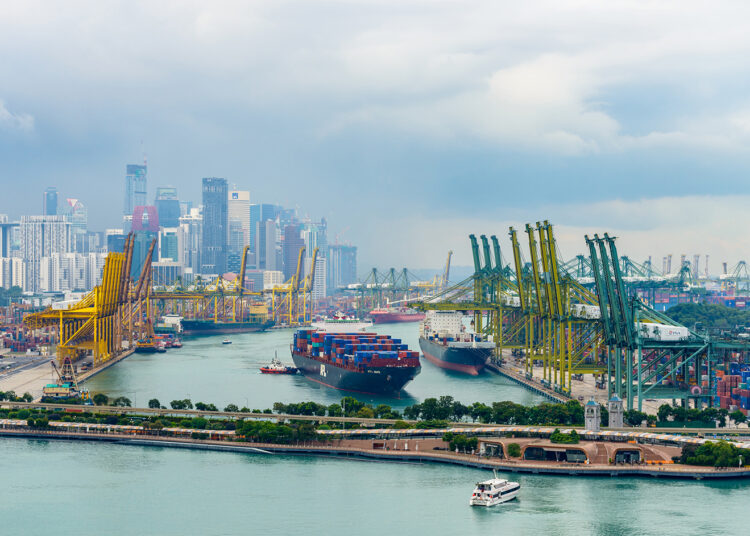Contrary to the pessimistic views on Chinese commercial dominance, the latest ranking of the world’s top 100 container ports, compiled by Lloyd’s List, reveals that China’s position remains robust. The efforts by the United States and Europe to reduce their dependence on China have not yet translated into significant changes, and the volume of container traffic passing through Chinese ports continues to grow.
Is China’s export machine faltering? The intention of Europe and North America to decrease their reliance on the former Middle Kingdom and boost their local industries has not (yet) been realized, according to the One Hundred Ports study published by the British trade journal Lloyd’s List.
Indeed, the top 10 remains heavily dominated by Chinese infrastructure, with seven ports in this leading group, alongside Singapore, Dubai (UAE), and Hong Kong. Rotterdam, previously the leading European port in this ranking, has fallen out of the top 10, now placed 12th, while Dubai, improving its position this year, has entered the 9th spot. A testament to the vitality of Chinese ports, Jiaxing (southwest of Shanghai) recorded the most significant progress, moving from 75th to 58th place in just one year.
China Controls Over 40% of the Top 10
According to Lloyd’s List, China’s share of traffic in the top 100 ports reached 41.3% last year, up from 40.2% in 2022. Ten years ago, this share was 36.6%. Other regions lag far behind: the rest of Asia (26.6%), North America (7.6%), and Europe (7.3%).
Top 10 Container Ports in the World for 2024:
- Shanghai (China)
- Singapore
- Ningbo-Zhoushan (China)
- Shenzhen (China)
- Qingdao (China)
- Guangzhou (China)
- Busan (South Korea)
- Tianjin (China)
- Dubai (UAE)
- Hong Kong
(Source: Lloyd’s List)
As true barometers of international trade, maritime traffic indicators, including this one, show that Chinese hegemony is likely to persist despite American and European attempts to reduce reliance. Linton Nightingale, Deputy Editor of Lloyd’s List, noted to Bloomberg that « the trade war with the U.S. is the most disruptive. » « However, Chinese products still enter the U.S., often through other emerging economies like Mexico, Vietnam, or India to circumvent tariffs, » he added.
Source : lemoci




